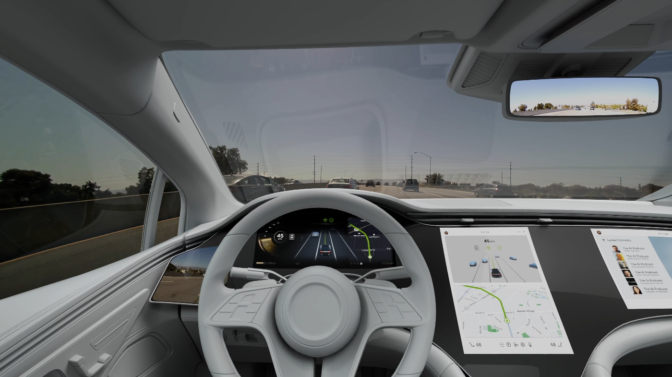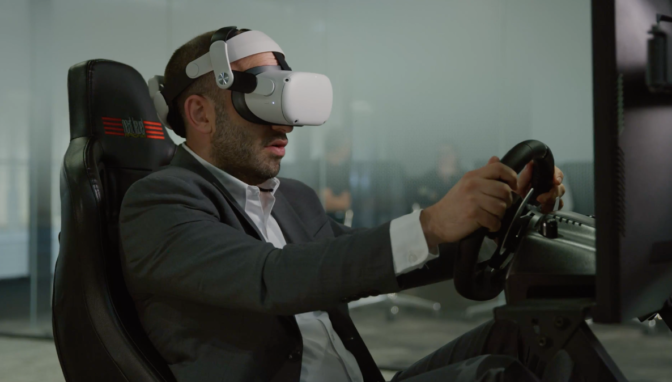AI is extending further into the vehicle as autonomous-driving technology becomes more prevalent.
With the NVIDIA DRIVE platform, automakers can design and implement intelligent interior features to continuously surprise and delight customers.
It all begins with the compute architecture. The recently introduced NVIDIA DRIVE Thor platform unifies traditionally distributed functions in vehicles — including digital cluster, infotainment, parking and assisted driving — for greater efficiency in development and faster software iteration.
NVIDIA DRIVE Concierge, built on the DRIVE IX software stack, runs an array of safety and convenience features, including driver and occupant monitoring, digital assistants and autonomous-vehicle visualization.
Automakers can benefit from NVIDIA data center solutions even if they aren’t using the NVIDIA DRIVE platform. With cloud technology, vehicles can stream the NVIDIA GeForce NOW cloud-gaming service without any special equipment. Plus, developers can train, test and validate in-vehicle AI models on NVIDIA DGX servers.
The same data center technology that’s accelerating AI development — in combination with the NVIDIA Omniverse platform for creating and operating metaverse applications — is also revolutionizing the automotive product cycle. Using NVIDIA DRIVE Sim built on Omniverse, automakers can design vehicle interiors and retail experiences entirely in the virtual world.
Easing Pain Points From Concept to Customer
Designing and selling vehicles requires the highest levels of organization and orchestration. The cockpit alone has dozens of components — such as steering wheel, cluster and infotainment — that developers must create and integrate with the rest of the car.

These processes are incredibly time- and resource-intensive — there are countless configurations, and chosen designs must be built out and tested prior to production. Vehicle designers must collaborate on various layouts, which must then be validated and approved. Customers must travel to dealerships to experience various options, and the ability to test features depends on a store’s inventory at any given time.
In the virtual world, developers can easily design vehicles, and car buyers can seamlessly test them, leading to an optimal experience on both ends of the production pipeline.
Design and Collaboration
Automakers operate design centers around the world, tapping into expertise from North America, Europe, Asia and other automotive hubs. Working on user experience concepts across these locations requires frequent international travel and close coordination.
With DRIVE Sim, designers and engineers anywhere in the world can work together to develop the cockpit experience, without having to leave their desks.

Design teams can also save time and valuable resources by testing concepts in the virtual world, without having to wait for physical prototypes. Decision-makers can review designs and ensure they meet relevant safety standards in DRIVE Sim before sending them to production.
Transforming the Customer Experience
The benefits of in-vehicle simulation extend far beyond the design phase.
Consumers are increasingly expecting full-service digital retail experiences. More than 60% of shoppers want to conduct more of the car-buying process online compared to the last time they bought a vehicle, while more than 75% are open to buying a car entirely online, according to an Autotrader survey.
The same tools used to design the vehicle can help meet these rising consumer expectations.
With DRIVE Sim, car buyers can configure and test the car from the comfort of their homes. Customers can see all potential options and combinations of vehicle features at the push of a button and take their dream car for a virtual spin — no lengthy trips to the dealership required.
From concept design to customer experience, DRIVE Sim is easing the process and opening up new ways to design and enjoy intelligent vehicles.
